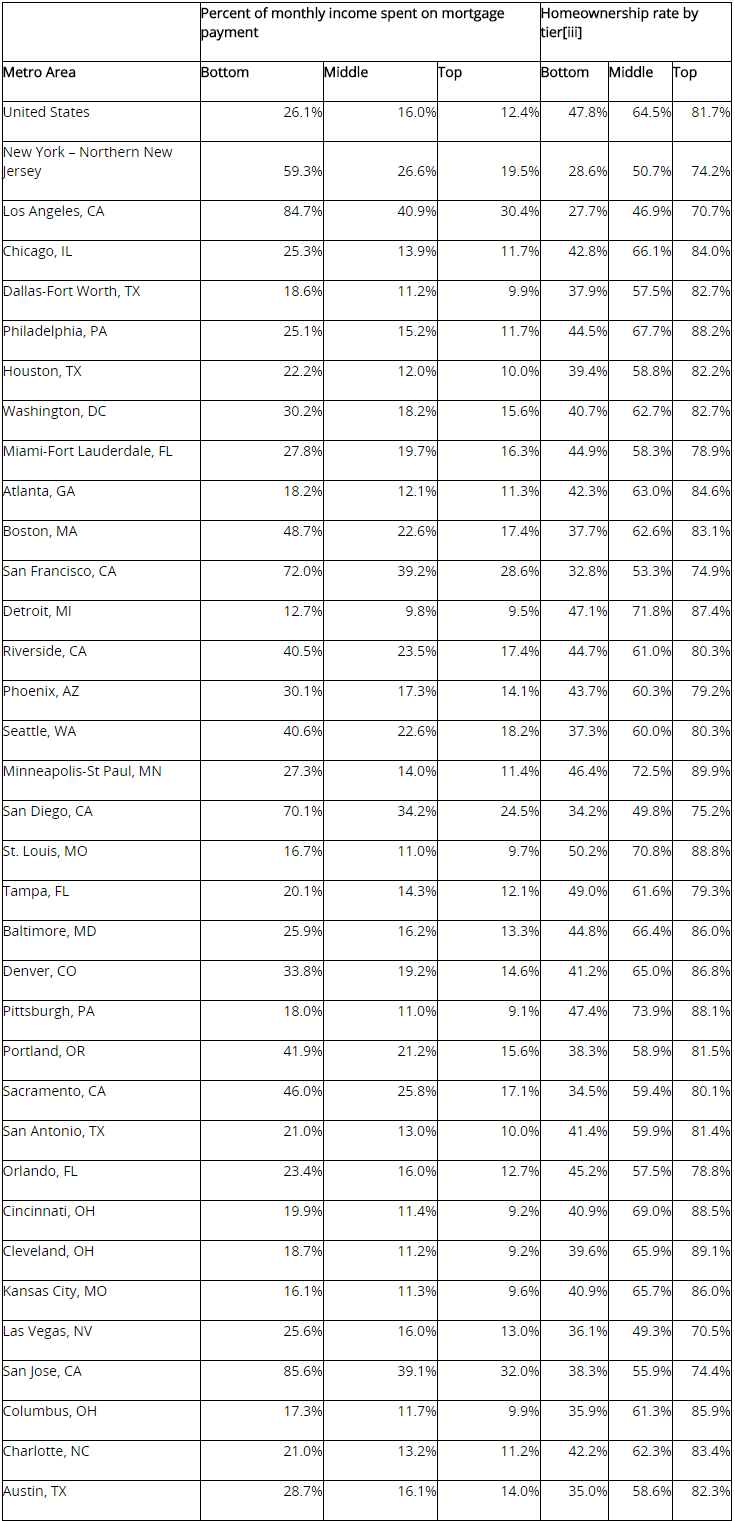You are viewing our site as a Broker, Switch Your View:
Agent | Broker Reset Filters to Default Back to ListLowest Earners in 1/3 of U.S. Housing Markets Can't Afford Even the Least Expensive Homes
May 06 2015
SEATTLE, May 4, 2015 -- Home affordability among the least affluent third of Americans has worsened sharply over the past two years, as the housing market has recovered but incomes have not.
The disparity has placed homeownership increasingly out of reach for working Americans whose wages are lowest, even if they shop for the least expensive homes on the market. Worsening housing affordability for the lowest earners comes as rental housing is less affordable than ever, forcing those who can't afford to buy to face rapidly rising monthly rent payments.
Zillow's latest analysis of how affordability has affected different wage-earning classes found that, while affordability has worsened for people with all kinds of paychecks, those making incomes in the bottom third are quickly falling further behind in affordability.
Those with lower incomes have long spent a bigger percentage of their incomes on house payments, Zillow found. But the share of income lower wage earners can expect to put toward a house payment has jumped in the past two years, while it has remained unchanged for those who make more money. (Zillow's analysis assumed low wage-earners would shop for the least expensive homes, while high wage-earners would shop for the most expensive homes).
All but four U.S. housing markets are affordable for high-earning home buyers shopping for homes in the top price tier. Low-earning home shoppers would expect to find even the least expensive homes unaffordable in 77 markets.
In fact, the bottom third of wage earners are effectively locked out of hot housing markets, like Los Angeles, where those in the bottom third would have to spend 85 percent of their monthly income on a low-priced home. Those in the middle third of incomes would have to spend 41 percent. Those in the top tier would pay an average of 30 percent.
"This is a striking example of growing income inequality in America, as upper-tier incomes grow sufficiently to keep even very expensive homes affordable for the well-heeled, while wages among the working class increasingly fail to support the purchase of even the most modest homes," said Zillow Chief Economist Dr. Stan Humphries. "At the same time, rising rents and stagnant wages are also making rental housing increasingly unaffordable. It is imperative that we find ways to create both meaningful wage growth for all workers, and increase the supply of affordable housing, and soon. If not, we run a real risk of the working class in America running out of affordable housing options, either to rent or to buy."

About Zillow:
Zillow® is the leading real estate and rental marketplace dedicated to empowering consumers with data, inspiration and knowledge around the place they call home, and connecting them with the best local professionals who can help. In addition, Zillow operates an industry-leading economics and analytics bureau led by Zillow's Chief Economist Dr. Stan Humphries. In 2015, Dr. Humphries co-wrote and published the New York Times' bestselling "Zillow Talk: The New Rules of Real Estate. Dr. Humphries and his team of economists and data analysts produce extensive housing data and research covering more than 450 markets at Zillow Real Estate Research. Zillow also sponsors the quarterly Zillow Home Price Expectations Survey, which asks more than 100 leading economists, real estate experts and investment and market strategists to predict the path of the Zillow Home Value Index over the next five years. Zillow also sponsors the bi-annual Zillow Housing Confidence Index (ZHCI) which measures consumer confidence in local housing markets, both currently and over time. Launched in 2006, Zillow is owned and operated by Zillow Group (NASDAQ: Z), and headquartered in Seattle.









